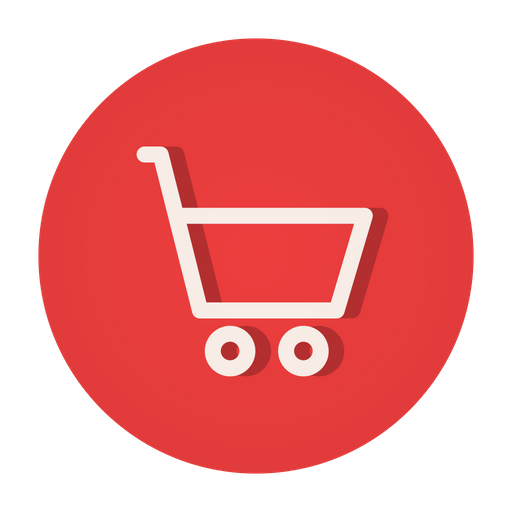Shopify is a popular platform that allows individuals and businesses to create their own online stores, with a wide variety of products and collections to choose from. However, for those who also own a separate website or store, it can be beneficial to integrate Shopify products and collections to provide a more comprehensive shopping experience for customers. Here, you will explore the steps to fetch and list collections and products from Shopify to your own online store.
Table of Contents
In this blog, we’ll discuss everything you need to know related to fectch and list collections and products from Shopify. Aditionally, you will discover the related frequently asked questions with their relevant answers.
Related: How to Start your online store in 60 minutes with Shopify?
What is Collection and Products in an Online Store?
In an online store, collections and products refer to the items that are being sold.
A collection is a group of products that are related in some way, such as by product type, theme, or season. For example, a clothing store might have collections for women’s clothing, men’s clothing, and accessories. Each collection can include a range of different products, such as shirts, pants, and shoes. Collections can be used to help shoppers find products that match their interests or needs, and they can also be used to highlight promotions or new arrivals.
A product is an individual item that is being sold in an online store. Each product has a unique name, description, and price, as well as any other relevant information such as size or color. Products can also have images and reviews to help shoppers make informed purchasing decisions. Products can be organized into collections, but they can also be listed on their own or as part of multiple collections.
Related: How to Get Products from Shopify Store to Display on Other Non-Shopify Stores?
How to Fetch and List Collections and Products From Shopify
Here’s how to fetch and list collections and products from Shopify to your own store.
Step 1: Set up a Private App in Shopify
In order to fetch and list products and collections from Shopify to your own store, you’ll need to set up a private app in Shopify.
This can be done by following these simple steps:
- Log in to your Shopify account and go to the “Apps” section.
- Click on “Manage private apps.”
- Click on “Create a new private app.”
- Enter a name for your app, as well as your email address.
- Under the “Admin API” section, select the permissions you need for your app. For example, if you only want to fetch products and collections, you can select “Read access” for the “Products” and “Collections” permissions.
- Click on “Save.”
- Your private app has been created, and you should now see your API credentials, including your API key and password.
Step 2: Fetch Products and Collections Using the Shopify API
Once you’ve set up a private app in Shopify, you can use the Shopify API to fetch products and collections from your Shopify store. The API allows you to retrieve data in various formats, including JSON and XML, which you can then parse and display on your own store.
To fetch products and collections using the Shopify API, you’ll need to send HTTP requests to the Shopify API endpoints. For example, to fetch a list of all products, you can send a GET request to the following endpoint:
https://yourstore.myshopify.com/admin/api/2021-09/products.json
Replace “yourstore” with your actual Shopify store name, and “2021-09” with the current Shopify API version. You’ll also need to include your API credentials in the request headers, as follows:
{
"X-Shopify-Access-Token": "YOUR_API_PASSWORD",
"Content-Type": "application/json"
}
You can also fetch collections by sending a GET request to the following endpoint:
https://yourstore.myshopify.com/admin/api/2021-09/custom_collections.json
Again, replace “yourstore” and “2021-09” with your actual store name and API version, respectively. You’ll also need to include your API credentials in the request headers.
Step 3: List Products and Collections on Your Own Store
Once you’ve fetched products and collections from Shopify using the API, you can list them on your own store using your preferred programming language or platform. For example, if you’re using a web-based platform like WordPress, you can use a plugin like WP Shopify to display your products and collections.
Alternatively, if you’re using a custom-built website, you can use a programming language like PHP or JavaScript to parse the JSON or XML data and display it on your own store. You can also customize the display and layout of the products and collections to match the design of your own store.
Also read: How to Enable Shopify Buy Now Payment Buttons?
Related Frequently Asked Questions With Answers
Here’re some important FAQ and their answers that you should know and understand:
1. Can I fetch only specific products or collections from my Shopify store?
Yes, you can fetch specific products or collections by sending a GET request to the appropriate Shopify API endpoint with specific parameters. For example, to fetch a specific product, you can send a GET request to the following endpoint:
https://yourstore.myshopify.com/admin/api/2021-09/products/PRODUCT_ID.jsonWhere “PRODUCT_ID” is the ID of the product you want to fetch. To fetch specific collections, you can include parameters in your GET request to filter by collection type, title, or other attributes.
2. Do I need to have a Shopify store in order to fetch and list products and collections on my own store?
Yes, you do need to have a Shopify store in order to use the Shopify API to fetch products and collections. However, you can create a Shopify store even if you don’t plan on selling products on the platform – you can simply use it as a backend to manage and store your product data.
Related: Want to implement a contact us form in shopify?
3. Is it possible to update or modify product and collection data using the Shopify API?
Yes, you can update and modify product and collection data using the Shopify API. You can send a PUT or POST request to the appropriate API endpoint with the updated data, and the changes will be reflected in your Shopify store.
4. Are there any limits or restrictions on how often I can fetch product and collection data using the Shopify API?
Yes, there are rate limits on how often you can fetch data from the Shopify API. The current limit is 2 requests per second, and exceeding this limit can result in a temporary ban from the API. However, for most small to medium-sized stores, this limit should not be an issue.
5. How can I ensure that my Shopify product and collection data stays in sync with my own store?
To keep your Shopify product and collection data in sync with your own store, you can set up a recurring task or cron job that fetches the data from the Shopify API at regular intervals (e.g. once per day). This ensures that any updates or changes made in your Shopify store are reflected in your own store in a timely manner.
Additionally, you can also set up webhooks in Shopify to receive real-time notifications of any changes made to your products or collections.
Also read: How to remove multiple facebook domain verification meta tags from the head of a Shopify webpage?
Conclusion
Integrating Shopify products and collections into your own store can provide a more comprehensive shopping experience for your customers. By following the steps outlined above, you can fetch and list products and collections from Shopify using the Shopify API, and display them on your own store using your preferred programming language or platform.
With a little bit of programming knowledge and the right tools, you can create a seamless shopping experience that combines the best of both worlds.



